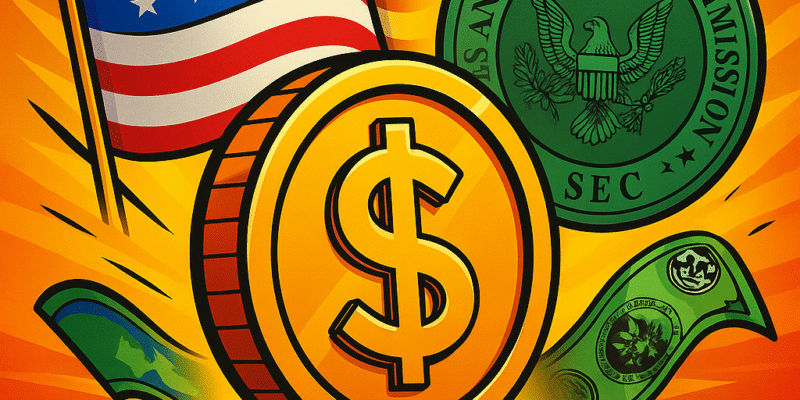The U.S. Securities and Exchange Commission (SEC) has reclassified certain fully backed stablecoins as cash equivalents, removing major legal uncertainty for businesses and investors. This landmark decision means qualifying USD-pegged stablecoins, like USDC, can now be used in payroll systems, DAO banking, and everyday business operations without being treated as securities. The move is expected to accelerate mainstream adoption, lower regulatory friction, and unlock new use cases in digital finance across the United States.
In its latest guidance, the SEC clarified that some U.S. dollar-pegged stablecoins can now be treated as cash equivalents, provided they meet specific conditions. These conditions include being fully backed by liquid assets and offering guaranteed redemption at par value. For businesses and financial platforms considering stablecoin use, this removes a major layer of legal uncertainty. Stablecoins that qualify are no longer treated as securities, which reduces regulatory friction for those looking to use them in day-to-day operations.
One of the key outcomes of this decision is its potential to improve the stability and credibility of stablecoins like USD Coin (USDC). With over $64 billion in market capitalization and a price that continues to hover around $1.00, USDC remains one of the most trusted assets in the stablecoin space. Analysts believe that this new classification could further legitimize its use in mainstream finance, especially in sectors such as payroll. For startups, remote teams, and freelance platforms, integrating stablecoins into payroll systems offers speed, low cost, and cross-border capabilities. The SEC’s guidance makes it easier for these businesses to move forward, confident that they are operating within a clearer regulatory environment.
Beyond payroll, the SEC’s stablecoin update could have ripple effects in decentralized finance, especially for DAOs (Decentralized Autonomous Organizations). A new wave of banking tools is emerging specifically for DAOs, including digital wallets that handle both crypto and fiat, and smart contract-powered platforms that streamline asset management. The passage of the GENIUS Act earlier this year also helps by lowering barriers for banks and fintech firms working with digital assets.
Still, the reclassification of stablecoins does not come without risks. Treating stablecoins like cash could expose financial systems to vulnerabilities if issuers are not adequately backed or if liquidity dries up in a crisis. Because stablecoins operate outside traditional monetary systems, they could also challenge central banks’ influence over monetary policy and currency flows. From a compliance perspective, businesses must remain alert. Stablecoins may enable more efficient operations, but they also come with heightened scrutiny due to the potential for misuse in illicit activities. Operationally, stablecoins depend on technology that is not immune to bugs, hacks, or governance flaws.
Ultimately, the SEC’s updated guidance marks a significant shift in how stablecoins can be used in the U.S. economy. While the move invites innovation, especially in payroll and DAO infrastructure, companies must weigh opportunity against risk. With thoughtful integration and responsible governance, stablecoins may very well become a core component of the digital financial ecosystem.

Comments